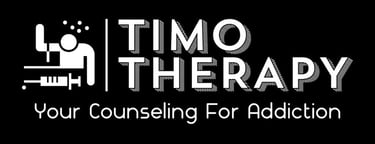Rehab or Revenue? When Treatment Becomes a Business, Not a Lifeline
The emergence of profit-driven treatment centers has raised significant concerns regarding the quality of care offered to patients seeking rehabilitation. As these facilities prioritize financial gain, various aspects of patient treatment risk being compromised. Lets take a look at when treatment becomes a business, and not a lifeline.
TREATMENT & RECOVERY


The Intersection of Profit and Care
The rise of treatment centers has marked a significant shift in the landscape of healthcare delivery, particularly in the realm of addiction and mental health services. Traditionally viewed as sanctuaries for healing, many of these facilities have increasingly adopted a business model, positioning profit as a primary motivator. This evolution raises critical questions regarding the delicate balance between delivering necessary healthcare and generating revenue. As treatment centers navigate this dual identity, the potential conflict between their commitment to patient care and the imperative to achieve profitability becomes evident.
In an environment where success is often measured by financial gain, the risk of compromising the quality of care looms large. Facilities may prioritize higher patient volumes and shorter lengths of stay over individualized treatment plans, which can detract from the comprehensive, long-term support that patients require. Consequently, the pursuit of revenue may take precedence over the urgent need for effective treatment and patient welfare. This trend is particularly concerning given that the populations served by these centers often grapple with precarious health challenges that necessitate more than just superficial interventions.
Moreover, the implications extend beyond the operational framework of treatment centers. Patients may find themselves caught in a system that values profitability over genuine care, leading to inadequate treatment outcomes. It becomes increasingly crucial to scrutinize how business-minded practices influence the standards of care and the overall patient experience within these facilities. As we delve deeper into this complex relationship between profit and care, it is imperative to consider the ethical ramifications and the ultimate impact on those who seek help in their most vulnerable moments.
The Impact of Profit-Driven Models on Quality of Care
The emergence of profit-driven treatment centers has raised significant concerns regarding the quality of care offered to patients seeking rehabilitation. As these facilities prioritize financial gain, various aspects of patient treatment risk being compromised. One of the most concerning implications is the reduction in staffing levels. Profit-driven organizations often aim to maximize revenue by minimizing operational costs, which can lead to inadequate staffing ratios. When there are fewer qualified professionals available to assist patients, the quality of interaction and support is drastically affected, ultimately undermining the rehabilitation process.
Additionally, the focus on revenue can lead to a tendency for over-medication as facilities may opt for quicker solutions to patient issues—often in the form of pharmaceutical interventions—rather than investing time in individualized treatment plans. This approach can result in patients receiving unnecessary medication instead of comprehensive care that addresses the root of their struggles. To create a sustainable treatment environment, effective rehabilitation programs should emphasize holistic, person-centered methods that transcend mere symptom management.
The lack of individualized treatment plans in profit-centric models can also be detrimental to a patient's recovery journey. Each individual has unique needs, and cookie-cutter approaches fail to account for the complexities of addiction and recovery. When treatment facilities prioritize uniformity over personalized care, they ignore the multifaceted nature of each patient’s experience, which can impede their chances of long-term success. The integration of customized plans is essential to facilitate meaningful improvements and foster an environment of healing and growth.
In conclusion, profit-driven models in treatment centers raise critical questions about the quality of care patients receive. Issues such as reduced staffing, over-medication, and inadequate personalized plans are detrimental to recovery outcomes. It is imperative to evaluate the implications of these profit-centric approaches to ensure that patient welfare remains at the forefront of rehabilitation services.
Long-Term Outcomes: Treatment vs. Bottom Line
The financial motivations driving treatment centers significantly impact the long-term recovery rates of patients. Recent studies indicate a troubling correlation between profit-driven approaches and the effectiveness of addiction treatment programs. When facilities prioritize revenue, the focus often shifts from patient care to financial gain, undermining the primary goal of rehabilitation—helping individuals achieve sustainable recovery.
Research conducted by the National Institute on Drug Abuse reveals that facilities emphasizing profit over patient outcomes frequently exhibit higher relapse rates. A study found that centers reporting a significant reliance on insurance reimbursement often offer shorter treatment programs. These truncated durations can compromise the quality of care, as patients may not receive the comprehensive support needed for lasting recovery. Notably, patients requiring more intensive therapeutic interventions can be discharged prematurely, increasing their vulnerability to relapse.
Moreover, organizations motivated by financial gain may engage in practices that prioritize services with high profit margins rather than evidence-based treatments. This can lead to the prescription of potentially harmful substances, including high dosages of opioids or other medications, rather than implementing holistic and individualized approaches. Consequently, patients may find themselves on a continuous cycle of substance use, treatment, and relapse, contributing to the mounting healthcare crisis surrounding addiction.
Data from various treatment centers indicate that facilities with strong ethical standards, emphasizing patient-centered care, report better long-term recovery rates. Patients receiving personalized treatment plans supported by aftercare services show significant improvements in their recovery journey. Such findings highlight the importance of shifting the focus from profit margins to holistic care models, ensuring that patient outcomes are at the forefront of addiction treatment strategies. Comprehensive support structures are crucial in breaking the cycle of addiction, offering a pathway toward recovery that is both effective and sustainable.
Identifying Treatment Facilities That Prioritize Care
In the complex landscape of addiction treatment, it is crucial for individuals seeking help to discern which facilities genuinely prioritize patient care over profit. With the increasing commercialization of rehabilitation services, making an informed choice is more important than ever. Below is a checklist of criteria that serves as a guide for assessing treatment centers.
First and foremost, accreditation plays a critical role in identifying credible facilities. Look for institutions that are certified by recognized bodies such as the Joint Commission or the Commission on Accreditation of Rehabilitation Facilities (CARF). Accreditation ensures that the facility adheres to specific standards of care, thereby reinforcing its commitment to providing high-quality treatment.
Next, consider the qualifications of the staff. Facilities that prioritize care will have licensed and experienced professionals, including medical doctors, psychologists, and addiction counselors, all of whom should have relevant certifications in their respective fields. Reviewing staff credentials can offer insights into the quality of care you can expect at the facility.
In addition, it is essential to evaluate the treatment philosophies employed by the facility. Programs that focus on individualized care, evidence-based treatments, and holistic approaches tend to be more patient-centered. Facilities should offer a variety of treatment modalities tailored to meet the unique needs of each patient rather than a one-size-fits-all approach.
Furthermore, patient testimonials and reviews can serve as valuable resources when assessing a facility. Facilities highly focused on care will likely have positive feedback from former patients who have walked the path of recovery.
Lastly, take note of how the facility approaches aftercare. A comprehensive aftercare plan is crucial for long-term recovery and demonstrates a dedication to ongoing support. By carefully evaluating these criteria, individuals can identify treatment facilities that not only provide necessary care but genuinely strive for the well-being of their patients.
Questions to Ask When Evaluating Treatment Centers
When searching for an appropriate treatment center, it is crucial to ask targeted questions that can help gauge the quality of care provided. Potential patients and their families should start by inquiring about the facility’s treatment approach. What methodologies do they employ? Are they evidence-based? Understanding the treatment modalities, such as cognitive-behavioral therapy, holistic approaches, or medication-assisted treatment, can provide clarity on whether these align with the patient's needs and preferences.
Next, it is equally important to discuss aftercare services. Does the treatment center offer a comprehensive aftercare program? What resources are available post-treatment, including support groups, counseling sessions, or outpatient programs? Aftercare is critical in sustaining recovery, and a facility that prioritizes this aspect shows a commitment to long-term success rather than merely short-term profit.
Another vital aspect to examine is the staff-to-patient ratio. What is the number of staff members compared to the number of patients? A lower ratio often indicates that patients receive more personalized attention and care, which is essential for effective treatment. Large facilities may offer a wide range of services but could risk overcrowding, affecting the quality of care.
Additionally, it is worthwhile to ask about the credentials and experience of the staff. What qualifications do they hold? Are they licensed professionals with experience in addiction treatment? Knowledgeable and empathetic staff can significantly influence the treatment experience and outcomes.
Lastly, seeking testimonials or success stories can provide insight into the center's reputation and effectiveness. Are there documented outcomes, and have past clients found value in the treatment received? This information can be instrumental in evaluating the center’s efficacy. Collectively, these inquiries help ensure that the chosen treatment center aligns with the patient’s needs and provides a supportive environment for recovery.
Alternative Models of Care: Putting Patients First
In the evolving landscape of healthcare, alternative models of care have emerged as compelling options that prioritize the welfare of patients over the financial motivations often seen in for-profit treatment centers. Nonprofit organizations and community-based services have taken root as invaluable resources, focusing on holistic rehabilitation strategies tailored to the individual needs of those they serve. Unlike traditional treatment facilities driven by revenue, these models emphasize patient-centered care and long-term recovery outcomes.
Nonprofit treatment organizations operate with a mission to provide accessible and affordable care. By leveraging grants, donations, and community support, they can offer services that are not solely profit-driven. This approach enables them to allocate resources to innovative therapeutic programs that prioritize mental and physical well-being, often resulting in higher success rates in recovery. For instance, some nonprofits provide integrated treatment by combining medical care, counseling, and support services, fostering a comprehensive environment conducive to healing.
Community-based services also play a pivotal role in ensuring that care remains accessible and effective. Local organizations often engage directly with residents, understanding the unique challenges faced by their communities. This grassroots involvement allows for tailored interventions that resonate with patients and encourage their active participation in their recovery process. Success stories abound, where individuals who once struggled with addiction have found hope and stability through such personalized support systems.
Moreover, these alternative care models emphasize collaboration over competition, fostering a network of providers who work together to ensure that patient outcomes remain the primary focus. By sharing resources and knowledge, community organizations can enhance the quality of care provided, allowing for a more sustainable approach to rehabilitation. In contrast to traditional profit-driven models, these alternatives present a promising pathway for healing that places patients at the heart of treatment.
Conclusion: Advocating for Patient-Centric Care
The conversation surrounding the intersection of rehabilitation and revenue generation is increasingly relevant in today’s healthcare landscape. As treatment centers become more influenced by profit-driven models, it is essential to advocate for patient-centric care that prioritizes health and recovery above financial interests. In a society where access to quality treatment can be the difference between life and death, the promotion of facilities that genuinely prioritize the well-being of individuals is critical.
Patient-centric care should be built on a foundation of empathy, respect, and understanding. Treatment centers that focus on these values can significantly enhance the recovery journey. This approach fosters an environment where individuals feel supported, safe, and empowered to engage actively in their treatment process. Moreover, emphasizing holistic methods that address not just the symptoms but the underlying issues can lead to more sustainable recovery outcomes. By prioritizing mental, emotional, and physical health, such treatment centers can reduce the likelihood of relapse and promote overall well-being.
Ultimately, the shift toward prioritizing health over revenue is not just a moral imperative but a necessary evolution in the healthcare system. Everyone deserves access to the care that can truly aid their recovery, and it is time to advocate for a future where treatment centers reflect these values.




















